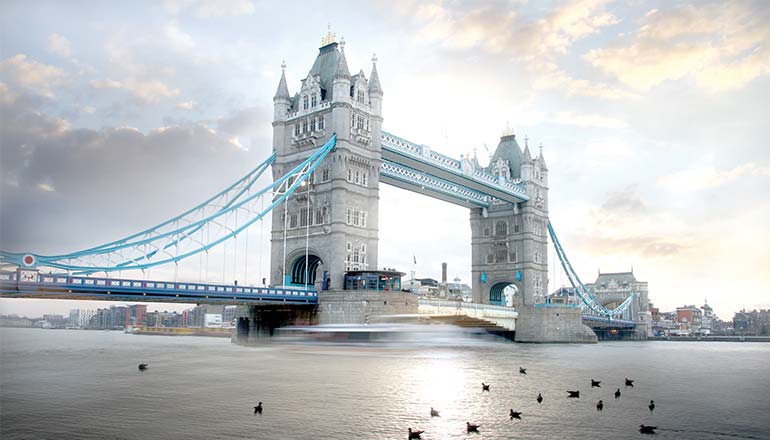

Modern traffic across London's historic Tower Bridge had not only increased in frequency but in weight too, causing misalignment and wear that also meant the draw-bridge style decks no longer locked down properly.
If left unresolved, further damage would lead to a major shutdown for repairs on what is a busy route into the capital city. To overcome this, an ABB load monitoring solution was installed to continuously measure the load across the bridge decks.
In the case of an imbalance being detected, the load cells would activate an adjustment to maintain equal loads across the deck bearings which reduces wear and, ultimately, increases the working life of the bridge.
The central 200-foot roadway span of London's Tower Bridge opens draw-bridge style to allow shipping to pass along the busy River Thames. Weighing over 1,000 tons each, two decks pivot on main bearings housed in the towers as they are raised and lowered.
However, increased amounts of traffic and heavier vehicles were adversely affecting these bearings, resulting in misalignment and wear as some took on more load than others. It also meant the bridge decks were not correctly engaging when locked down. Left unresolved, the damage would continue and result in the bridge closing for major repairs.
To overcome the problem, the old stationary resting blocks for the decks were replaced with active ones capable of movement. ABB Millmate Pressductor load cells were then housed in each of the new blocks to continuously measure the load across the bridge decks and, critically, to relay load data to a programmable logic control (PLC) system. If the PLC sensed an imbalance in weight, it would activate hydraulic cylinders to adjust the position of the resting blocks.
This action maintains equal loads across the deck bearings at all times, helping to both increase their life and that of the overall bridge structure.
“
Installing ABB's continuous load monitoring system avoided the need to shut down a major bridge for repairs and extended the life of the bridge structure.”
